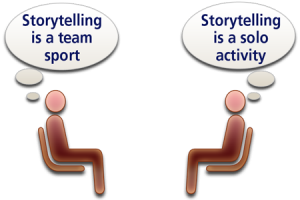I asked well over a 100 federal workers what kinds of leadership skills are needed today. Overwhelmingly, they stated leaders today need the ability to communicate, actively listen, create a vision, build trust, be flexible, collaborate with others, trust others, be accountable, lead with heart and mind, coach others and demonstrate competence. Since times are changing, this begs the question, is your leadership conversational style keeping up?
With that as our backdrop, I’ll suggest that this requires a different type of leadership interaction. In other words, “corporate communications” must give way to “corporate conversations.” When we consider those leadership skills needed, something has changed that is driving the need for a more conversational style of leadership. I propose 5 reasons.
The first is the “knowledge worker” and the service industry have long been replacing the manufacturing sector, not to mention the vast number of university graduates. Consequently, we need inclusive ways to share information transparently and that can be responded to.
Secondly, organizations are more dynamic, responsive to external forces and are flatter and less hierarchical. Consequently, they are more prone to change, which requires both top-down, lateral and bottom-up conversations from front-line employees who are pivotal in the value creation and buy in.
Third, organizational change is being driven by global change to include the workforce that is now more diverse in their thinking, dispersed in numerous locations and divested from one company for a lifetime. As these lines become more fluid, the need for more complex, two-way interactions is needed.

Fourth, it’s not uncommon to find two or three generations in the workforce, each defined and informed by technology, social expectations and behaviors reflecting belief systems. As a result, there are expectations to move from top-down communications to more transparent horizontal conversational communication.
Fifth, technology is a catalyst for change with the e-media (twitter, snapchat, etc.) and the digitization of information being a constant in its ubiquitous power. The pace and unfiltered nature of communication is driving the need to converse in organizations. And with stakeholders, it’s creating reliance on traditional top-down-driven corporate communications.
Here’s my reality on corporate conversations versus corporate communications. The organizations we all work in are webs of relationships and conversations. Where we are in the organization creates conversations about questions that pertain to use. However, if we open the room to create conversations with others, we cross-pollinate ideas, we create new knowledge, new connections and potential actions. All of this is putting energy into our current systems. In lieu of using the intelligence of a few people in top-down communication, let’s leverage the collective intelligence of the group that is being demanded by this era of our workforce. Let’s make sure our conversational leadership style is keeping up with the times.
For more on harnessing your leadership conversational style, check out these resources:
Leadership Conversations Academy Course
Andrew Rahaman is part of the GovLoop Featured Contributor program, where we feature articles by government voices from all across the country (and world!). To see more Featured Contributor posts, click here.





Excellent post! I really enjoyed your discussion regarding the importance of understanding one’s conversational style and how that may need modification in the organizational environment.